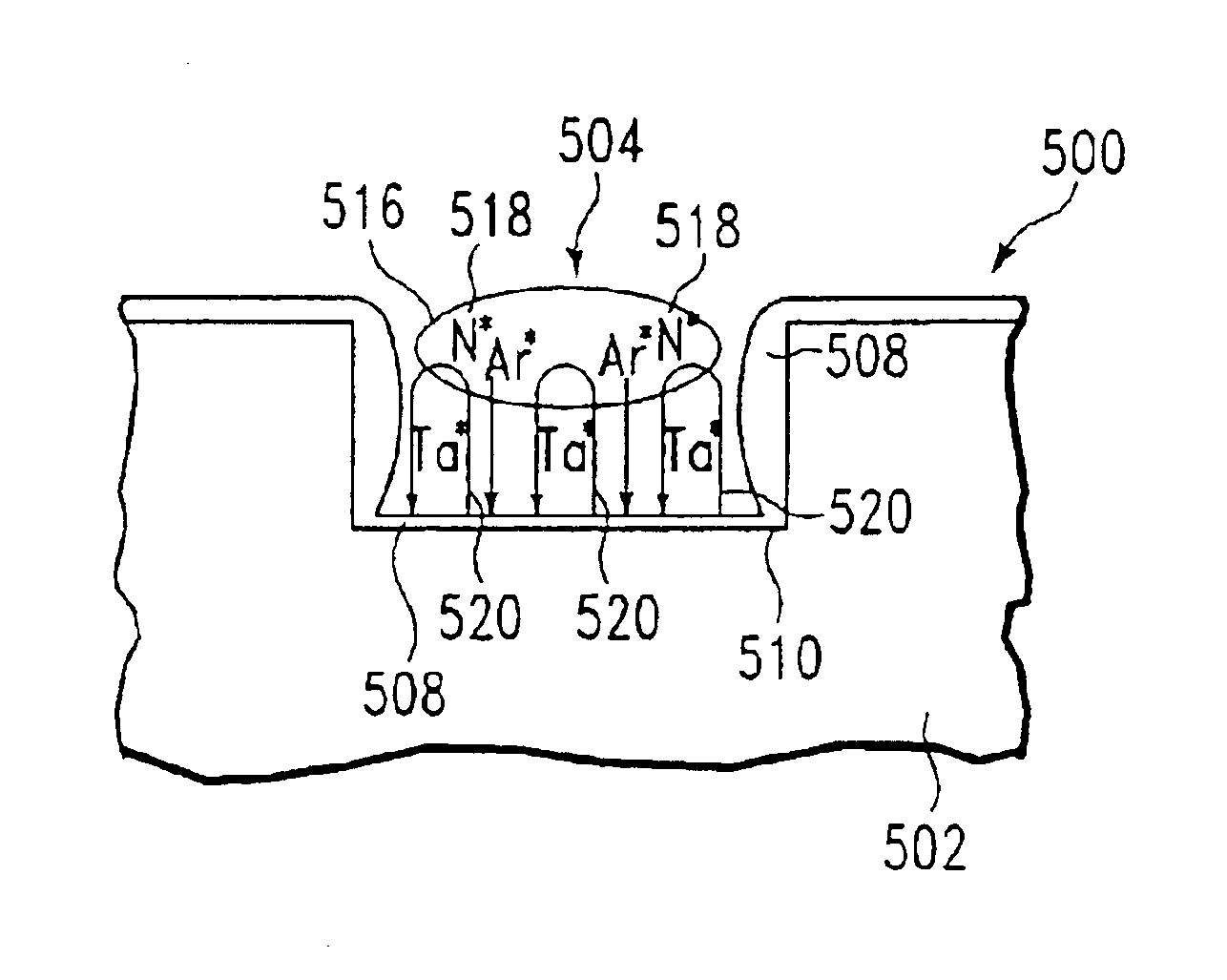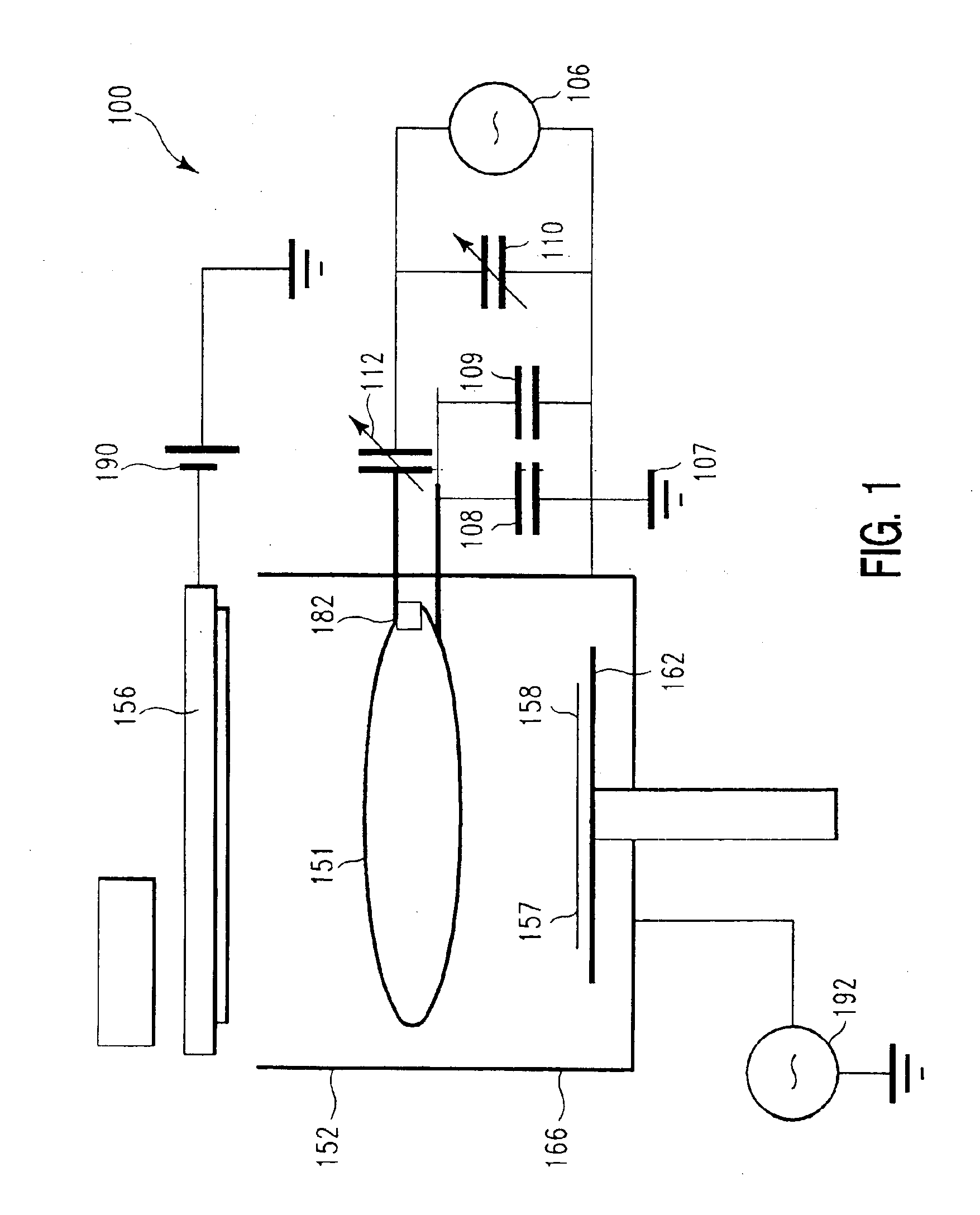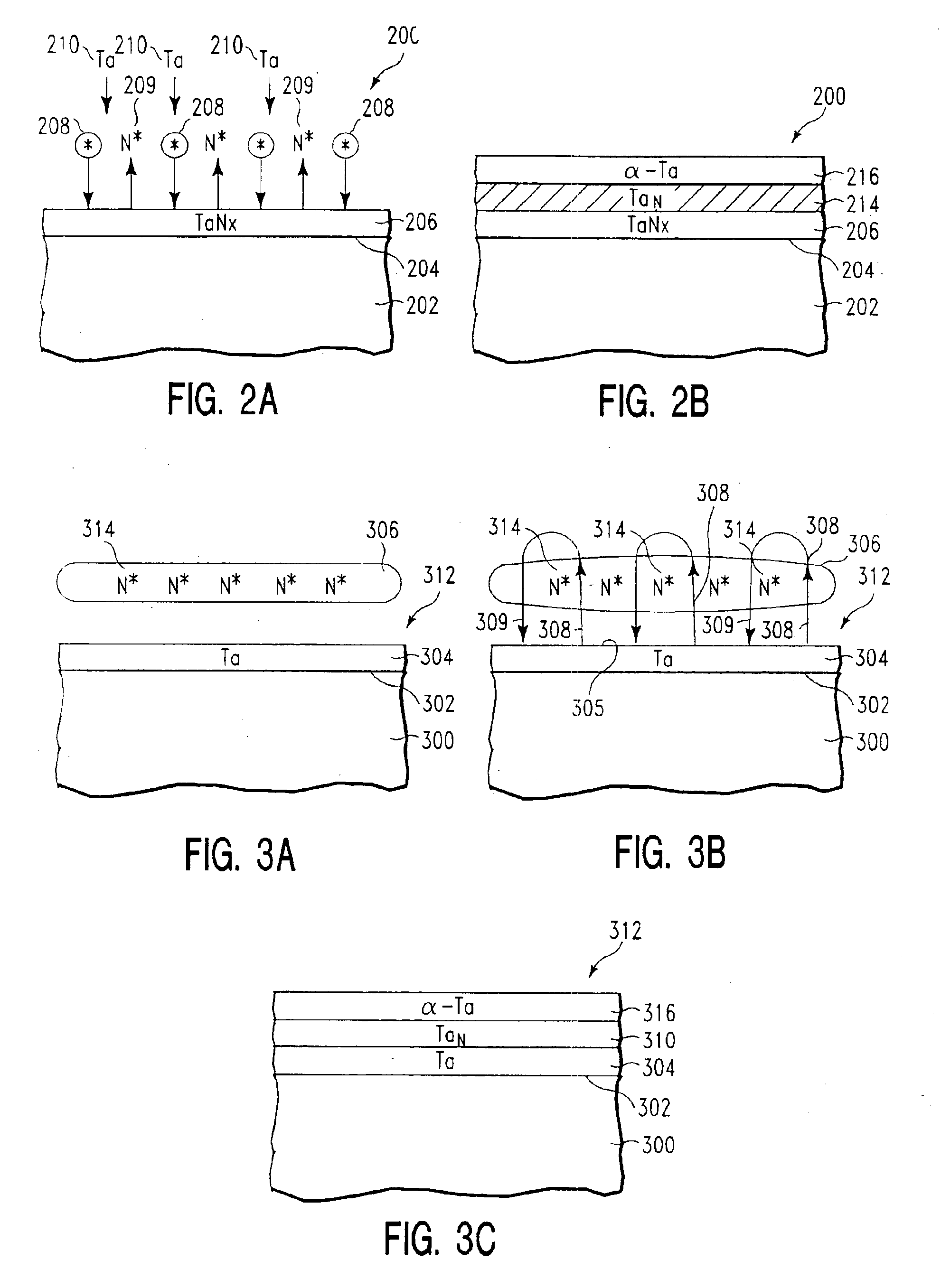Method of depositing a TaN seed layer
- Summary
- Abstract
- Description
- Claims
- Application Information
AI Technical Summary
Benefits of technology
Problems solved by technology
Method used
Image
Examples
Embodiment Construction
[0044]This application is a continuation in part of U.S. patent application Ser. No. 10 / 146,416, filed May 14, 2002 which is presently pending, and which is incorporated by reference herein in its entirety.
[0045]We originally discovered a surprising and easy method for depositing ultra-low resistivity (about 10 μΩ-cm) tantalum films.
[0046]Deposition of a 1,000 Å thick tantalum film using high density plasma or long-throw sputtering upon a silicon dioxide substrate, at a substrate support platen temperature of about 400° C. or higher (a substrate temperature of about 325° C. or higher), results in a tantalum film having a resistivity of about 10 μΩ-cm. (Deposition of thinner films under the same conditions provides the same low resistivity.) This is compared with a film resistivity of about 165 μΩ-cm obtained for a tantalum film sputtered upon a room temperature substrate. In addition, deposition of the tantalum film at room temperature, followed by a 15 minute anneal at a substrate ...
PUM
| Property | Measurement | Unit |
|---|---|---|
| Temperature | aaaaa | aaaaa |
| Pressure | aaaaa | aaaaa |
| Pressure | aaaaa | aaaaa |
Abstract
Description
Claims
Application Information
 Login to View More
Login to View More - Generate Ideas
- Intellectual Property
- Life Sciences
- Materials
- Tech Scout
- Unparalleled Data Quality
- Higher Quality Content
- 60% Fewer Hallucinations
Browse by: Latest US Patents, China's latest patents, Technical Efficacy Thesaurus, Application Domain, Technology Topic, Popular Technical Reports.
© 2025 PatSnap. All rights reserved.Legal|Privacy policy|Modern Slavery Act Transparency Statement|Sitemap|About US| Contact US: help@patsnap.com



